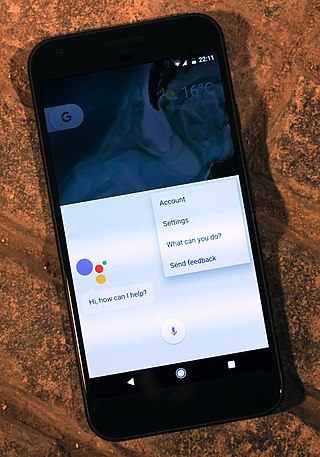
A virtual community is a social work of individuals who connect through specific social media, potentially crossing geographical and political boundaries in order to pursue mutual interests or goals. Some of the most pervasive virtual communities are online communities operating under social networking services.
Social software, also known as social apps or social platform includes communications and interactive tools that are often based on the Internet. Communication tools typically handle capturing, storing and presenting communication, usually written but increasingly including audio and video as well. Interactive tools handle mediated interactions between a pair or group of users. They focus on establishing and maintaining a connection among users, facilitating the mechanics of conversation and talk. Social software generally refers to software that makes collaborative behaviour, the organisation and moulding of communities, self-expression, social interaction and feedback possible for individuals. Another element of the existing definition of social software is that it allows for the structured mediation of opinion between people, in a centralized or self-regulating manner. The most improved area for social software is that Web 2.0 applications can all promote co-operation between people and the creation of online communities more than ever before. The opportunities offered by social software are instant connections and opportunities to learn. An additional defining feature of social software is that apart from interaction and collaboration, it aggregates the collective behaviour of its users, allowing not only crowds to learn from an individual but individuals to learn from the crowds as well. Hence, the interactions enabled by social software can be one-to-one, one-to-many, or many-to-many.

In computing, an avatar is a graphical representation of a user, the user's character, or persona. Avatars can be two-dimensional icons in Internet forums and other online communities, where they are also known as profile pictures, userpics, or formerly picons. Alternatively, an avatar can take the form of a three-dimensional model, as used in online worlds and video games, or an imaginary character with no graphical appearance, as in text-based games or worlds such as MUDs.
Internet identity (IID), also online identity, online personality, online persona or internet persona, is a social identity that an Internet user establishes in online communities and websites. It may also be an actively constructed presentation of oneself. Although some people choose to use their real names online, some Internet users prefer to be anonymous, identifying themselves by means of pseudonyms, which reveal varying amounts of personally identifiable information. An online identity may even be determined by a user's relationship to a certain social group they are a part of online. Some can be deceptive about their identity.

User interface (UI) design or user interface engineering is the design of user interfaces for machines and software, such as computers, home appliances, mobile devices, and other electronic devices, with the focus on maximizing usability and the user experience. In computer or software design, user interface (UI) design primarily focuses on information architecture. It is the process of building interfaces that clearly communicate to the user what's important. UI design refers to graphical user interfaces and other forms of interface design. The goal of user interface design is to make the user's interaction as simple and efficient as possible, in terms of accomplishing user goals.

In computing, a news aggregator, also termed a feed aggregator, content aggregator, feed reader, news reader, or simply an aggregator, is client software or a web application that aggregates digital content such as online newspapers, blogs, podcasts, and video blogs (vlogs) in one location for easy viewing. The updates distributed may include journal tables of contents, podcasts, videos, and news items.
Interactive advertising uses online or offline interactive media to communicate with consumers and to promote products, brands, services, and public service announcements, corporate or political groups.
In artificial intelligence, an embodied agent, also sometimes referred to as an interface agent, is an intelligent agent that interacts with the environment through a physical body within that environment. Agents that are represented graphically with a body, for example a human or a cartoon animal, are also called embodied agents, although they have only virtual, not physical, embodiment. A branch of artificial intelligence focuses on empowering such agents to interact autonomously with human beings and the environment. Mobile robots are one example of physically embodied agents; Ananova and Microsoft Agent are examples of graphically embodied agents. Embodied conversational agents are embodied agents that are capable of engaging in conversation with one another and with humans employing the same verbal and nonverbal means that humans do.

A dialogue system, or conversational agent (CA), is a computer system intended to converse with a human. Dialogue systems employed one or more of text, speech, graphics, haptics, gestures, and other modes for communication on both the input and output channel.

Social media are interactive technologies that facilitate the creation, sharing and aggregation of content amongst virtual communities and networks. Common features include:
Engagement marketing is a marketing strategy that directly engages consumers and invites and encourages them to participate in the evolution of a brand or a brand experience. Rather than looking at consumers as passive receivers of messages, engagement marketers believe that consumers should be actively involved in the production and co-creation of marketing programs, developing a relationship with the brand.

Digital marketing is the component of marketing that uses the Internet and online-based digital technologies such as desktop computers, mobile phones, and other digital media and platforms to promote products and services. It has significantly transformed the way brands and businesses utilize technology for marketing since the 1990s and 2000s. As digital platforms became increasingly incorporated into marketing plans and everyday life, and as people increasingly used digital devices instead of visiting physical shops, digital marketing campaigns have become prevalent, employing combinations of search engine optimization (SEO), search engine marketing (SEM), content marketing, influencer marketing, content automation, campaign marketing, data-driven marketing, e-commerce marketing, social media marketing, social media optimization, e-mail direct marketing, display advertising, e-books, and optical disks and games have become commonplace. Digital marketing extends to non-Internet channels that provide digital media, such as television, mobile phones, callbacks, and on-hold mobile ringtones. The extension to non-Internet channels differentiates digital marketing from online marketing.

SitePal is a speaking avatar platform for small and medium-sized businesses developed by Oddcast.
Customer engagement is an interaction between an external consumer/customer and an organization through various online or offline channels. According to Hollebeek, Srivastava and Chen, customer engagement is "a customer’s motivationally driven, volitional investment of operant resources, and operand resources into brand interactions," which applies to online and offline engagement.

A virtual assistant (VA) is a software agent that can perform a range of tasks or services for a user based on user input such as commands or questions, including verbal ones. Such technologies often incorporate chatbot capabilities to simulate human conversation, such as via online chat, to facilitate interaction with their users. The interaction may be via text, graphical interface, or voice - as some virtual assistants are able to interpret human speech and respond via synthesized voices.
Marketing buzz or simply buzz—a term used in viral marketing—is the interaction of consumers and users with a product or service which amplifies or alters the original marketing message. This emotion, energy, excitement, or anticipation about a product or service can be positive or negative. Buzz can be generated by intentional marketing activities by the brand owner or it can be the result of an independent event that enters public awareness through social or traditional media such as newspapers. Marketing buzz originally referred to oral communication but in the age of Web 2.0, social media such as Facebook, Twitter, Instagram and YouTube are now the dominant communication channels for marketing buzz.
Social currency refers to the actual and potential resources from presence in social networks and communities, including both digital and offline. It is, in essence, an action made by a company or stance of being, to which consumers feel a sense of value when associating with your brand, while the humanization of your brand generates loyalty and "word of mouth" virality for the organization. The concept derives from Pierre Bourdieu's social capital theory and relates to increasing one's sense of community, granting access to information and knowledge, helping to form one's identity, and providing status and recognition.
Netnography is a "form of qualitative research that seeks to understand the cultural experiences that encompass and are reflected within the traces, practices, networks and systems of social media". It is a specific set of research practices related to data collection, analysis, research ethics, and representation, rooted in participant observation that can be conceptualized into three key stages: investigation, interaction, and immersion. In netnography, a significant amount of the data originates in and manifests through the digital traces of naturally occurring public conversations recorded by contemporary communications networks. Netnography uses these conversations as data. It is an interpretive research method that adapts the traditional, in-person participant observation techniques of anthropology to the study of interactions and experiences manifesting through digital communications.

A non-player character (NPC), also called a non-playable character, is a character in a game that is not controlled by a player. The term originated in traditional tabletop role-playing games where it applies to characters controlled by the gamemaster or referee rather than by another player. In video games, this usually means a character controlled by the computer that has a predetermined set of behaviors that potentially will impact gameplay, but will not necessarily be the product of true artificial intelligence.
Social media use by businesses includes a range of applications. Although social media accessed via desktop computers offer a variety of opportunities for companies in a wide range of business sectors, mobile social media, which users can access when they are "on the go" via tablet computers or smartphones, benefit companies because of the location- and time-sensitive awareness of their users. Mobile social media tools can be used for marketing research, communication, sales promotions/discounts, informal employee learning/organizational development, relationship development/loyalty programs, and e-commerce.









